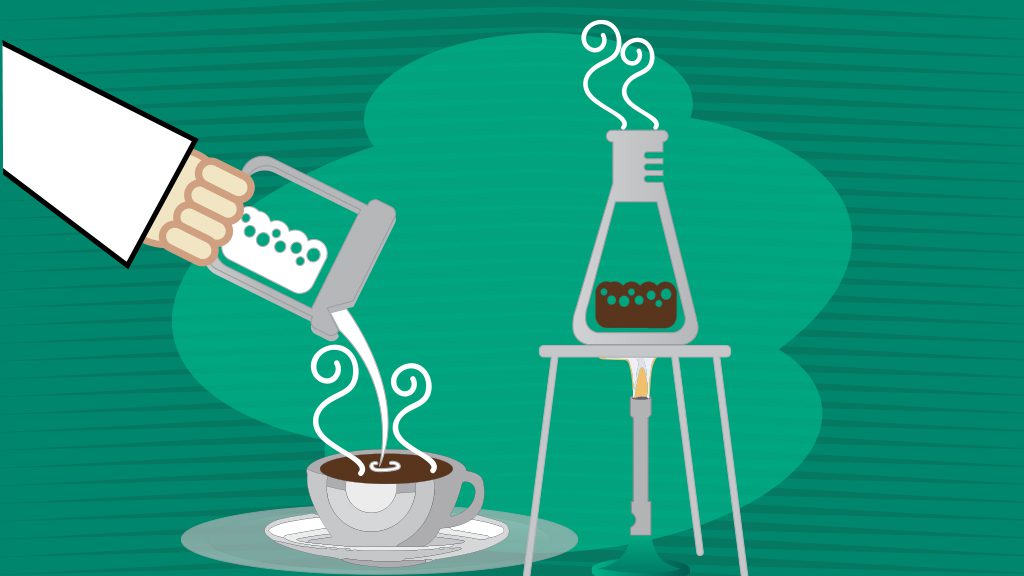Meet Joe Tremont…he’s the University of Houston’s director of environmental health and life safety. His job is to keep our researchers safe and prevent things from blowing up in the meantime. Joe’s job is tough, but necessary. We love our scientists, but they don’t make Joe’s job easy at times, especially when it comes to creating a culture of safety.
“Not long after I started here (at the University of Houston), I went into a lab to conduct an inspection and there were multiple fume hoods in this facility. Outside the door, there was a huge sign stating, no eating or drinking in the lab. However, inside one fume hood was a fully functional coffee bar… (sigh),” Tremont said.
What is a culture of safety?
Let’s get fancy for a moment … According to U.S. Department of Health and Human Services, a culture of safety means organizations maintain a commitment to safety at all levels, from frontline providers to managers and executives. As a result, organizations minimize adverse events, despite carrying out intrinsically complex and hazardous work.
“Everyone is responsible for their own safety and the next man’s safety,” said Tremont. “There are several best practices to ensure your lab is optimally safe.”
That might mean moving the more social aspects of the lab environment to the break room (where the coffee should be).
Best Practices for Safer Labs
According to Tremont, there are several best practices researchers and students can follow to make labs safer for everyone involved.
1. Get Educated.
Scientists must gain knowledge about safety practices, how to properly operate lab equipment and why rules and regulations are in place. In many cases, the principal investigator (PI) is well aware of safety standards, but students new to working in a lab may not. It’s the responsibility of the PI to educate their students and instill safe practices from the start of their career.
2. Attend Training.
Training and education go hand-in hand but adhering to a culture of safety in a lab requires continuous instruction.
“Training is a huge deal,” said Tremont. “It may be annual lab safety classes or specific courses on proper handling of chemical or biological substances. With more, high-quality training, PIs (and students) better understand what they’re working with (and the potential exposure hazards), which make them safer scientists overall.”
3. Be a Champion for Lab Safety.
University safety departments can be your friend. They’re a dedicated bunch, but they can’t be everywhere, at all times. PIs and their students must help enforce safety protocols in the lab.
“It’s a matter of ethics and accountability,” said Tremont. “Just because we (the safety department) don’t catch a safety violation doesn’t mean it’s OK to let red flags slide. When things are ignored, big trouble happens.”
Actually, enforcement starts at the bottom and works its way up, he said. “If a ‘frontline,’ undergraduate student witnesses a safety violation, they must report it to the lab manager who might have missed it.” Furthermore, the safety department is here to help and support scientists. They want your experiment to be just as successful as you.
4. Be Accountable.
Uh oh, we got in trouble … As humans, in order to remain accountable, we must be aware of behavioral consequences. When there’s frequent, unreported lab safety violations, terrible things occur such as damaged equipment and research specimens and in extreme cases, researchers have been injured or killed.
Moral of this story? Incorporate these simple best safety practices in your lab and make a commitment to drinking coffee at home. Yes it’s true, the absolute best coffee is made in a lab, but we all know it’s not safe or smart to brew something up in a shared space with a deadly microbe … I’ll take cream, sugar and Neisseria gonorrhoeae…um, no.
The research conducted in university research labs has the potential to change the world, but that can’t happen if labs are shut down and people are hurt. Everyone is responsible for the safety of themselves and others … the integrity of the research project and health of the scientists depend on it.
And lastly, please listen to your “Joe” (aka your university safety department), be friends with your “Joe”, gift your “Joe” a cup of joe (preferably not infested with Neisseria Gonorrhoeae) and when in need, seek out your safety department’s expertise and knowledge on how to create a safer lab environment.



